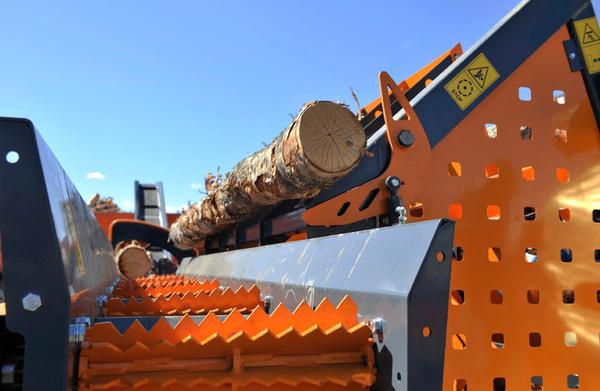What is the carbon footprint of using firewood?
Burning firewood, or klapi, has long been a traditional method of heating homes, particularly in rural areas. However, it is crucial to understand its environmental impact to assess its sustainability. The carbon footprint of using firewood primarily involves the carbon emissions released during combustion. When wood is burned, it releases carbon dioxide (CO2), a greenhouse gas that contributes to climate change.
Several factors influence the carbon footprint of firewood. The type of wood, moisture content, and combustion efficiency all play significant roles. Hardwood species, such as oak and beech, often have a higher energy content compared to softwoods, meaning they can produce more heat and release more CO2 per unit of wood. Conversely, burning seasoned wood—wood that has been dried for six months to two years—reduces the moisture content and increases combustion efficiency, thereby lowering emissions.
While firewood can be considered carbon-neutral when sourced responsibly, this depends on the balance between emissions and the carbon absorbed by regrowing trees. To truly minimise the carbon footprint, firewood should be harvested sustainably, ensuring that forests are maintained and regenerated to offset emissions.
How to choose sustainable firewood?
Eco-friendly firewood is an essential component of sustainable heating practices. Choosing sustainable firewood begins with sourcing wood from responsibly managed forests. These forests are managed to preserve biodiversity, maintain ecosystem services, and ensure long-term productivity. Certification bodies, such as the Forest Stewardship Council (FSC), provide assurance that the wood is sourced sustainably.
Another key criterion for sustainable firewood is its moisture content. Seasoned wood, with moisture content below 20%, burns more efficiently, producing more heat and fewer pollutants. This efficiency not only reduces the carbon footprint but also enhances the overall heating performance. Additionally, selecting local wood minimises the environmental impact of transportation, further contributing to sustainability.
By prioritising sustainably sourced and seasoned firewood, individuals can significantly reduce their carbon footprint while enjoying the warmth and comfort of a traditional wood fire.
Alternatives to traditional firewood for eco-friendly heating
For those seeking to embrace sustainable heating options beyond traditional firewood, several alternatives offer promising solutions. Biomass pellets, for example, are made from compressed organic materials, such as sawdust and agricultural residues. They burn cleanly and efficiently, producing less smoke and ash compared to conventional firewood.
Eco-logs, another alternative, are manufactured from recycled wood waste. These logs are designed to burn longer and hotter, providing a high-energy output with lower emissions. In addition, they are often produced using sustainable practices, making them an attractive option for environmentally conscious consumers.
Beyond biomass products, renewable energy sources such as solar and geothermal heating systems present carbon-neutral solutions for home heating. Although these systems may require a higher initial investment, they offer long-term environmental and economic benefits by significantly reducing reliance on fossil fuels.
Tips for efficient burning to minimise emissions
Maximising the efficiency of firewood burning is crucial to reducing emissions and enhancing sustainability. Proper storage is the first step; keeping wood dry and well-ventilated ensures it remains seasoned and ready for efficient combustion. Stacking wood off the ground and covering it protects it from moisture, while allowing air circulation.
Using optimal burning techniques is also essential. Start with small kindling to establish a strong draft, then add larger pieces of wood. Ensure the fire receives adequate oxygen by not overcrowding the firebox. These practices help achieve complete combustion, reducing smoke and emissions.
Regular maintenance of stoves and chimneys is vital to maximise efficiency and safety. Clean chimneys prevent creosote buildup, which can lead to inefficient burning and increased emissions. Investing in modern, efficient stoves or inserts can further enhance combustion efficiency, thus supporting carbon-neutral wood burning.
The role of reforestation in offsetting firewood emissions
Reforestation plays a critical role in balancing the carbon emissions associated with burning firewood. Planting new trees not only absorbs CO2 but also supports biodiversity and ecosystem health. Forests act as carbon sinks, capturing carbon emissions and helping mitigate climate change.
Engaging in or supporting reforestation projects can offset the carbon footprint of firewood use. By contributing to reforestation efforts, individuals and businesses help ensure that the carbon cycle remains balanced, promoting long-term sustainability. Reikälevy’s commitment to conserving natural resources aligns with these principles, emphasising the importance of ecological stewardship in our operations.
Conclusion
The path to reducing the carbon footprint of firewood involves understanding its environmental impact, choosing sustainable alternatives, and implementing efficient burning practices. By sourcing eco-friendly firewood, exploring renewable heating options, and supporting reforestation efforts, individuals can enjoy the benefits of carbon-neutral wood burning.
Reikälevy, with our SAMI brand, stands as a leader in providing high-quality and sustainable solutions for modern farms. Our commitment to developing eco-friendly machinery helps ensure the success of professionals and resellers in the agricultural sector. We invite you to explore our product range and discover how our expertise can support your sustainability goals. Contact us for more information or visit our website to learn more.

